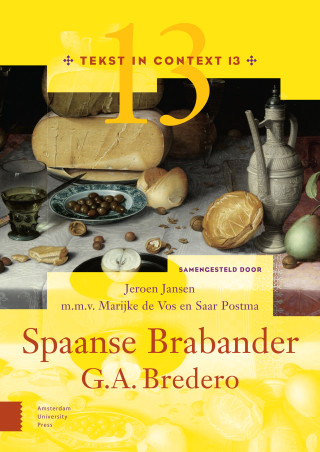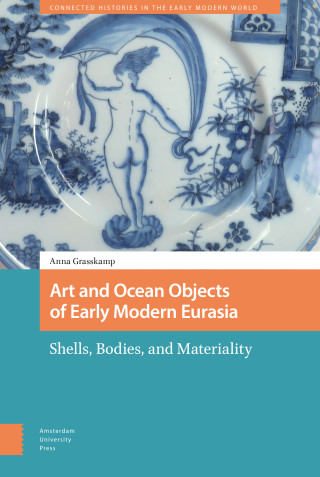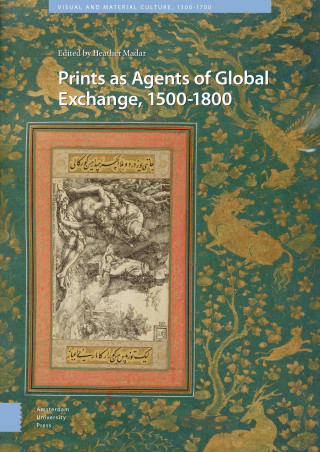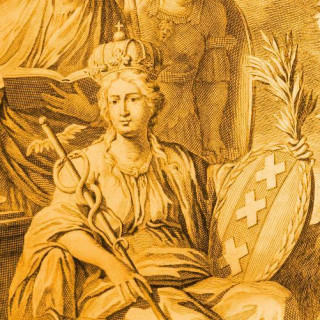
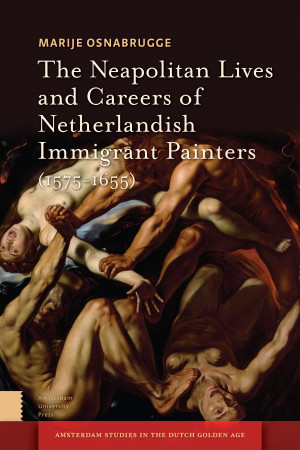
- Title
- The Neapolitan Lives and Careers of Netherlandish Immigrant Painters (1575-1655)
- Author
- Marije Osnabrugge
- Price
- € 165,00 excl. VAT
- ISBN
- 9789462988200
- Format
- Hardback
- Number of pages
- 398
- Language
- English
- Publication date
- 29 - 04 - 2019
- Dimensions
- 15.6 x 23.4 cm
- Partner

- Discipline
- History, Art History, and Archaeology
- Preview
- Download Preview
Acknowledgments
Introduction
Chapter One: From Itinerant to Immigrant Artist: Aert Mytens in Naples (c. 1575 - 1598)
Chapter Two: Talent, Business and Friendship: Louis Finson and Abraham Vinck (1598-1612)
Chapter Three: Fiammingo by Birth, Neapolitan by Adoption: Hendrick de Somer in Naples (1622-1655)
Chapter Four: The Neapolitan Career of a Peripatetic Painter: Matthias Stom (c. 1632- C.1639)
Chapter Five: The Experiences of Five Netherlandish Immigrant Painters in Naples
Appendix
Bibliography
List of Illustrations
Photo Credits
Reviews and Features
"This book is a valuable contribution not only towards our understanding of Netherlandish artists and their innovative contributions, but also the different ways they integrated artistically and socially in Naples from 1575-1655."
- Anna K. Tuck-Scala, BMGN - Low Countries Historical Review, 135-2 (2020)
"Intelligent, erudite, and original in approach, Marije Osnabrugge, author of this provocative, well thought out new publication, remains undaunted by the plethora of studies grazing the edges of her own, which is devoted to an area that has boomed since the Caravaggio revival beginning with post—World War II attention to Naples."
- Colin Eisler, Renaissance Quarterly, Volume 73, Issue 3, Fall 2020
"This thoughtful book ... will appeal to readers interested in Dutch and Flemish art beyond the Northern and Southern Netherlands, the development of Neapolitan art, Baroque art and cultural exchange across the Alps and within Italy as well as the phenomenon of artistic migration."
- Catherine Puglisi, The Burlington Magazine, April 2020
"The book reflects meticulous research and proposes compelling hypotheses when credible information is missing (not uncommon in the still fledgling field of Neapolitan art). Its specific purview is unprecedented and yet indispensable for a better understanding of artistic mobility in early modern Europe."
- Itay Sapir, caa.reviews, 2020
"Combining extensive archival documentation with perceptive visual analysis, this groundbreaking study looks at five artists from the Netherlands who lived in Naples for extended periods: Aert Mytens, Louis Finson, Abraham Vinck, Hendrick De Somer, and Matthias Stom = The paintings these men made in Naples are less familiar than works by other northerners who lived in Italy (e.g., Rubens, Van Dyck, and Gerrit van Honthorst), but Osnabrugge reveals their work to be both innovative and sought after by collectors and for churches in Naples and elsewhere in Italy." Summing Up: Highly recommended.
- A. Golahny, CHOICE Reviews, November 2019 Vol. 57 No. 3
- Anna K. Tuck-Scala, BMGN - Low Countries Historical Review, 135-2 (2020)
"Intelligent, erudite, and original in approach, Marije Osnabrugge, author of this provocative, well thought out new publication, remains undaunted by the plethora of studies grazing the edges of her own, which is devoted to an area that has boomed since the Caravaggio revival beginning with post—World War II attention to Naples."
- Colin Eisler, Renaissance Quarterly, Volume 73, Issue 3, Fall 2020
"This thoughtful book ... will appeal to readers interested in Dutch and Flemish art beyond the Northern and Southern Netherlands, the development of Neapolitan art, Baroque art and cultural exchange across the Alps and within Italy as well as the phenomenon of artistic migration."
- Catherine Puglisi, The Burlington Magazine, April 2020
"The book reflects meticulous research and proposes compelling hypotheses when credible information is missing (not uncommon in the still fledgling field of Neapolitan art). Its specific purview is unprecedented and yet indispensable for a better understanding of artistic mobility in early modern Europe."
- Itay Sapir, caa.reviews, 2020
"Combining extensive archival documentation with perceptive visual analysis, this groundbreaking study looks at five artists from the Netherlands who lived in Naples for extended periods: Aert Mytens, Louis Finson, Abraham Vinck, Hendrick De Somer, and Matthias Stom = The paintings these men made in Naples are less familiar than works by other northerners who lived in Italy (e.g., Rubens, Van Dyck, and Gerrit van Honthorst), but Osnabrugge reveals their work to be both innovative and sought after by collectors and for churches in Naples and elsewhere in Italy." Summing Up: Highly recommended.
- A. Golahny, CHOICE Reviews, November 2019 Vol. 57 No. 3
Marije Osnabrugge
The Neapolitan Lives and Careers of Netherlandish Immigrant Painters (1575-1655)
The seventeenth century was a time of exceptional mobility for Netherlandish artists. This mobility had a profound impact on artistic developments, stimulating innovation and creativity in the Netherlands as well as abroad. Whereas most artists undertook a relatively short study trip, others decided to settle down and shape their life in a new environment. This study traces the integration process — as artists and as migrants in general — of Aert Mytens, Louis Finson, Abraham Vinck, Hendrick De Somer and Matthias Stom in Naples between 1575 and 1655. Departing from the idea that the experience of every migrant is specific to their background and skills, The Neapolitan Lives and Careers of Netherlandish Immigrant Painters (1575-1655) examines the challenges each of these five artists faced, the choices they made and the opportunities they grasped. The dynamics of art and society in Naples, the bustling capital of the Spanish viceroyalty, forms the context for their lives and careers.
Author
Marije Osnabrugge
Marije Osnabrugge is a postdoctoral researcher at the Université de Genève. She has published in The Burlington Magazine and Nederlands Kunsthistorisch Jaarboek.


